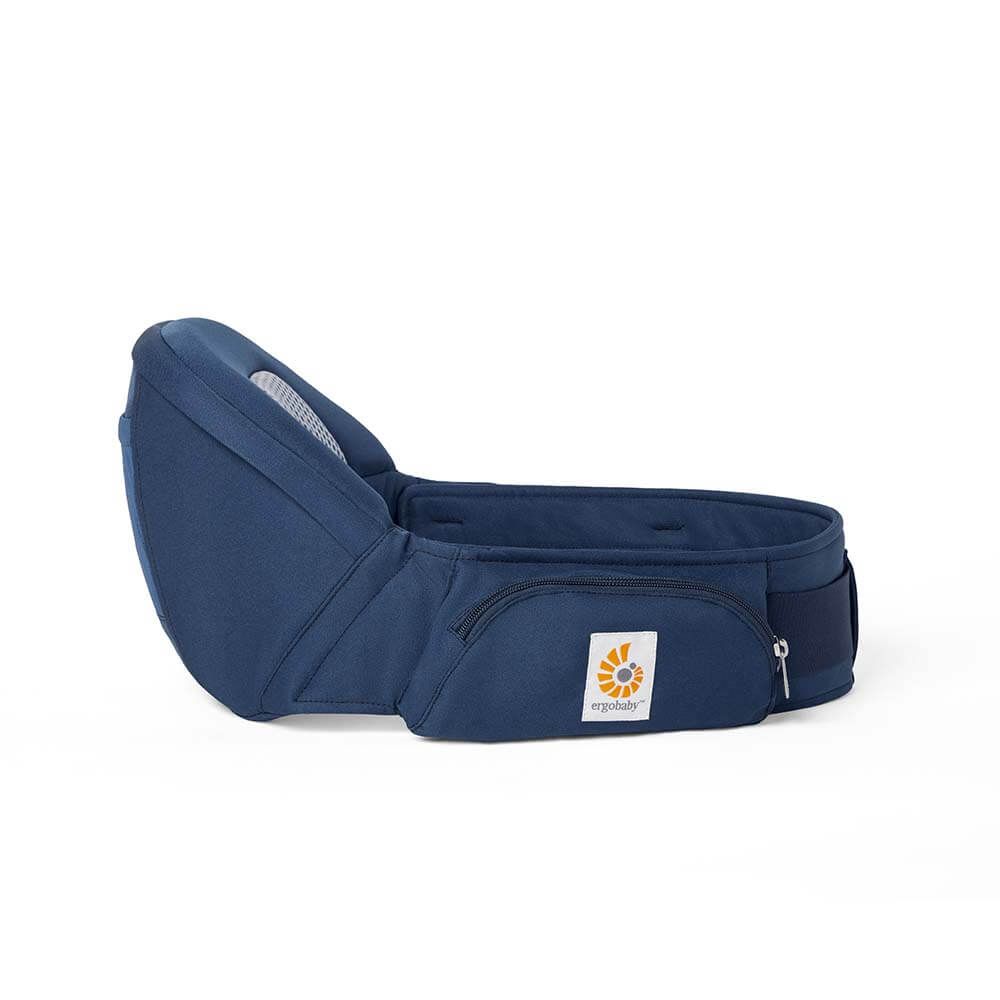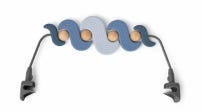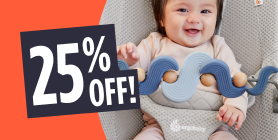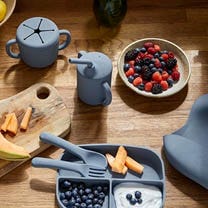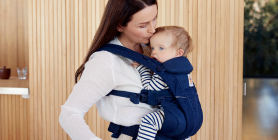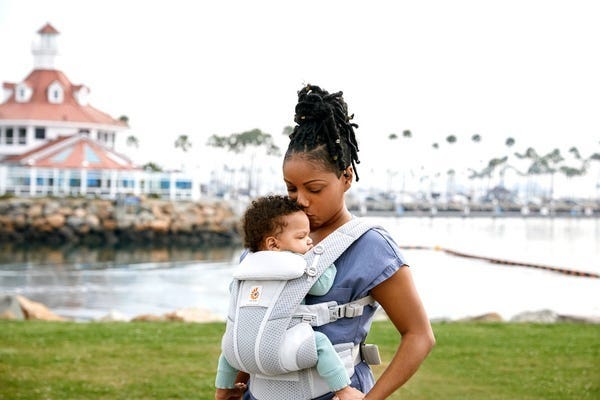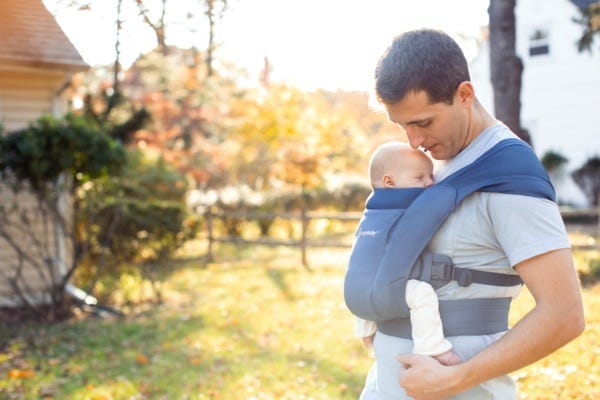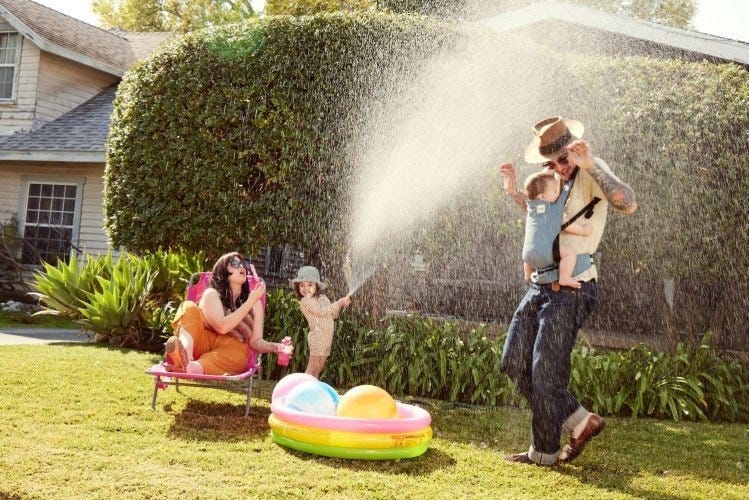
In the hospital you have lots of help—nurses, lactation consultants and doctors—all at your beck and call. Then comes the time to take your little one home. You’ve read the “must-have” books, subscribed to on-line baby websites and parenting blogs and spent many evenings on the phone with your own mom. Think you’re prepared? Think again. Here are a few important tips parents tell me they wish they had been told about the first few weeks at home with their newborn.
Sleep
Everyone tells you that you won’t get much sleep, but it’s worse than you imagine. Realistically, you won’t get any in the first few weeks. In addition to needing to feed every few hours, babies don’t know the difference between day and night. So no matter what time he rests, you need to take advantage and nap too. You can also try to help him get on track by keeping nighttime feeds and changing as calm as possible and wake him after 3 hours of daytime sleep to feed. But as soon as your doctor says he’s gaining weight appropriately and it’s ok to let him sleep at night, don’t wake him up at night to feed and enjoy the extra sleep yourself.
Crying
Babies cry! When they’re not sleeping, eating or pooping, they’re crying! They cry when they are hungry, wet, cold, hurt, or just for no apparent reason at all. You will get to know her cries and what they mean. If she’s been fed, changed and checked to make sure nothing is hurting her, it’s ok to let her cry for a little while. Often it’s just her way of blowing of steam. So give her the chance to just let it all out. You can try cuddling her at your chest, swaddling, rocking or singing to her, it may help. If she is truly inconsolable, call your pediatrician.
Feeding
We know that breast milk is the best nutrition for your infant and you should breastfeed your baby every 2-3 hours or when she seems hungry. What you may not know is that although breastfeeding is “natural”, most babies aren’t born experts. Breastfeeding takes patience and hard work initially, but keep at it. It’s worth it for your infant’s health as well as your own. And don’t be afraid to ask your pediatrician or a lactation consultant for help. It usually takes 4 or 5 days for your real milk to come in. Rest, water and a nutritious diet can help. Stress, lack of sleep, dehydration and not enough calories can decrease your milk production.
Poop
While your infant may resemble you, his stool won’t look like yours. Babies poop a wide variety of colors, consistencies and frequency. During the first 24 hours of life, stools are thick, sticky, and brownish-black in color—called meconium. After the first few days of life, the stools of breast fed babies lighten in color from black to brown to green to yellow. They also change consistency from sticky to seedy to cottage cheese-like to looser. Also, when some babies poop they strain so hard their face can turn bright red and that’s ok. And other babies may not stool for a day or two when they first come home from the hospital, while others will poop after every feed.
Growth
Your baby will most likely lose weight the first few days. Many newborns lose up to 10% of their birth weight after they are born. Within the first week of life, they start gaining weight back and reach their birth weight by around 2 weeks of age. Your pediatrician should weigh your baby, plot and follow her growth at each office visit.
Skin
Who says that babies have soft, silky smooth skin? The truth is that most infants initially have dry, flaky skin that may start to peel after the first day. They also have a wide variety of skin rashes, bumps, spots and even acne. Don’t worry, having baby acne doesn’t mean more acne as a teen. Most are normal newborn skin conditions and will go away with time—no treatment needed. Your doctor can take a peek at the next exam. Simply continue to wash baby when needed (every few days should suffice) with a mild unscented baby wash.
Hiccups, sneezes and spit up…oh my!
You’ll think it is so cute the first time your baby hiccups, sneezes and even spits up a little. But then it continues and goes on and on and on. While these behaviors rarely bother the baby, they often really bother parents. Don’t worry. It’s all a normal part of infancy. As long as he is feeding and gaining weight normally, there is no need to be concerned. If the spit up worsens, is projectile, or you see blood, call your pediatrician. By no means will this completely prepare you for life with your newborn. You will have questions every day, hour and minute you are home with your baby. Write them down as you think of them and take them with you to your infant’s check-ups. Don’t forget that you can always call your baby’s pediatrician if something is urgent or you’re unsure of what to do—that’s what we’re here for. After all, you can’t be prepared for everything.
Emotional Benefits of Getting Outside
Spending time in nature with your baby can strengthen the bond between you. The simple act of holding your baby close, feeling their warmth, and sharing new experiences together can create strong emotional connections. It’s also a wonderful way to reduce stress and improve your mood. When my littles were extra fussy, I’d take a walk around the neighborhood. Even though I don't live in an area with trails and surrounded by nature, simply behind outside changed everything. A little vitamin D does wonders!
Cognitive Development
Nature is a sensory wonderland for babies. The different sights, sounds, and smells can stimulate your baby’s senses and promote cognitive development. Watching leaves rustle, hearing birds chirp, and feeling the texture of a tree bark can all contribute to their learning and development.
All About Baby Carriers for Nature Adventures
Choosing the Right Baby Carrier
When it comes to selecting the best baby carrier for summer adventures, there are several options to consider.
Types of Baby Carriers:
- Wraps: Perfect for newborns, providing a snug and secure fit.
- Slings: Ideal for quick and easy use, offering good ventilation.
- Soft Structured Carriers: Versatile and comfortable for both parent and baby, suitable for longer trips.
Factors to Consider:
- Baby’s Age and Weight: Ensure the carrier is appropriate for your baby’s size and weight. For example, Ergobaby’s Embrace Newborn Carrier is perfect for the fourth trimester where baby is small and you’re looking for an easy way to stay close. As they grow, you’ll want to upgrade to an all-position carrier that’s meant for growing babies.
- Parent’s Comfort and Ergonomics: Look for carriers with padded shoulder straps and lumbar support if you’re planning on longer outings.
- Ease of Use: Choose a carrier that is easy to put on and take off.
- Climate and Breathability: Opt for carriers made of breathable fabrics to keep you and your baby cool in hot weather.
Safety Tips:
- Proper Positioning: Ensure your baby is seated correctly, with their legs in an "M" position and their head should be close enough to kiss.
- Checking for Wear and Tear: Regularly inspect your carrier for any signs of damage.
- Ensuring Adequate Support: Make sure the carrier provides proper support for your baby’s head and neck.
Exploring Nature with a Baby Carrier
Ideal Spots for a Nature Walk with Baby
- Parks and Gardens: Great for leisurely walks and picnics.
- Nature Trails and Forests: Perfect for more adventurous outings.
- Beaches and Lakesides: Wonderful for enjoying the water and sand, with the right carrier.
Activity Ideas
- Hiking: Enjoy a scenic hike with a hiking baby carrier that offers support and storage.
- Bird Watching: Use your carrier to keep your baby close while you explore and observe wildlife.
- Picnics: A carrier can free up your hands, making it easier to carry picnic supplies.
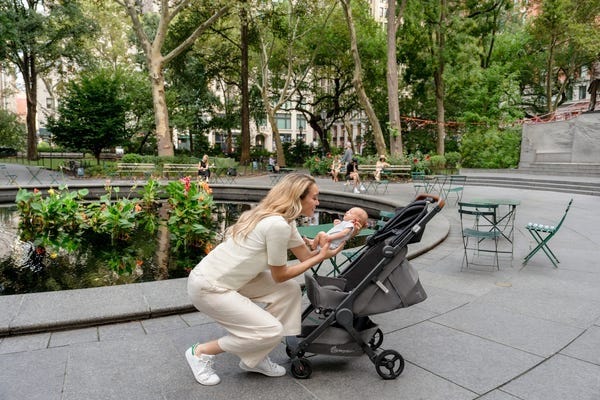

Advantages of Using Strollers for Nature Adventures
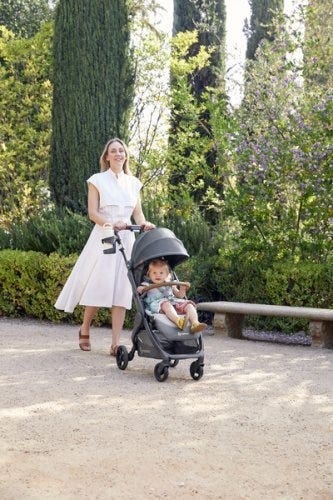

While baby carriers are fantastic for mobility and closeness, depending on the adventure of choice you might want to be a stroller along too.
There are a LOT of baby stroller options on the market. So we understand how confusing it can be to choose the one that’s right for your family. Not only are there a variety of brands, but a variety of strollers that serve different purposes.
There are a few types of strollers on the market:
- Full-sized stroller: This is typically the stroller parents thing of buying for all its versatility.
- Lightweight or umbrella stroller:These compact strollers are perfect for on-the-go adventures.
- Jogging stroller: Designed for parents who want to combine fitness with outdoor adventures.
- Double stroller: Designed for parents with multiple kids, especially twins.
- Car seat carrier: These strollers connect to a specific car seat. We don't typically recommend these as they can be unsafe for baby and uncomfortable for parents who are pushing.
Learn more about the types of strollers and which one would be best for you.
Benefits of Bringing a Stroller
- Storage Space for Gear: Ample room for carrying all your essentials like a diaper bag, beach toys and more.
- Shade and Weather Protection: Built-in canopies to shield your baby from the sun when they are lounging.
- Options: If you have more than one kid, you can stroll with one and carry the other. Or, if you’re getting warm or your little one is getting fussy, you can switch up their position from stroller to carrier or vice versa.
Safety Tips for Strollers
- Ensure your stroller is in good working condition. Make sure buckles are still buckling and that there are no rips or holes that could compromise your baby’s safety.
- Use sunshades or bug nets to protect your little one’s skin.
- Securing the baby properly: always buckle up your baby for safety even if you think they are old enough to go without the buckle.
Combining Baby Carriers and Strollers
For the ultimate flexibility, consider using both a baby carrier and a stroller on your outings.
Combining both options allows you to adapt to different situations. Use the carrier for more rugged trails and switch to the stroller for smoother paths or when your baby needs a nap.
Transition Tips
- Smooth Transitions: Plan stops where you can easily switch from carrier to stroller.
- Pack Light: Only bring essentials to make transitions easier.
Tips for a Successful Adventure
Planning Ahead
- Route Planning: Choose baby-friendly trails and parks. Check local mom groups or outdoor groups and get recommendations for the best outings for kids.
- Check Weather Conditions: Avoid extreme heat or unpredictable weather. Even with our most breathable carriers, when it’s hot, it’s hot. And having two bodies against each other in the heat will be naturally hot and sticky already.
- Packing Checklist: Include diapers, snacks, water, sunscreen, and a first-aid kit. These all-position carriers have storage pockets where you can fit some of the items easily!
- Stay Hydrated and Nourished: Pack healthy snacks to keep energy levels up and bring plenty of water for both you and baby.
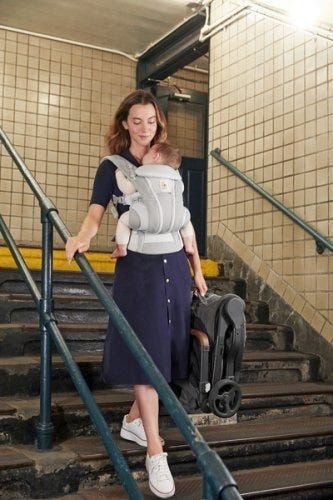

Summer adventures with your baby are a wonderful way to create lasting memories and enjoy the beauty of nature together. From baby carriers to strollers, Ergobaby products are designed to provide comfort and ease for both you and your little one. So, gear up, get outside, and explore the world with your baby by your side.
Ready to embark on your own summer adventures? Check out Ergobaby’s range of baby carriers and strollers to find the perfect match for your family’s needs. Visit our website today and start planning your next outdoor excursion!





